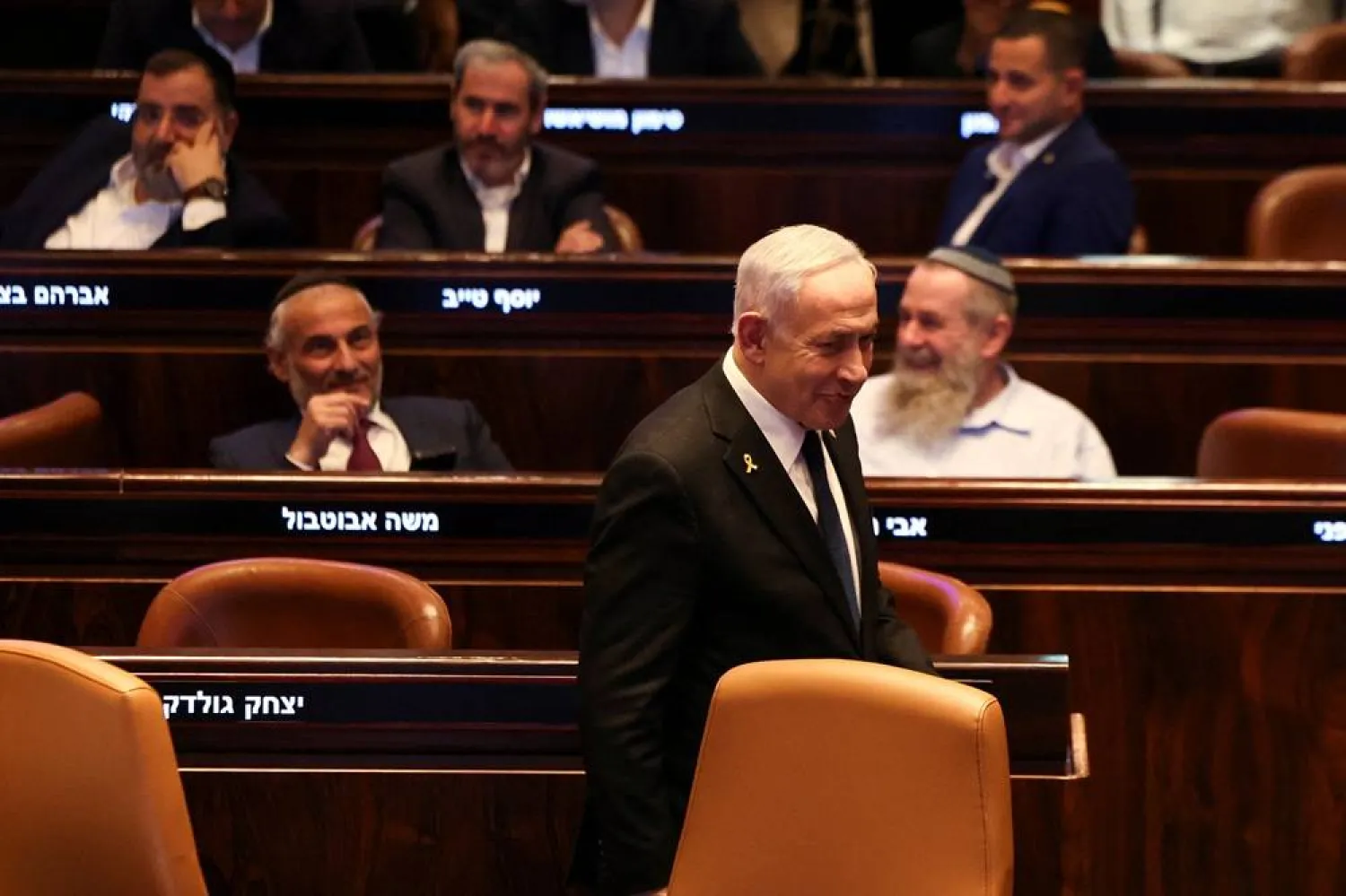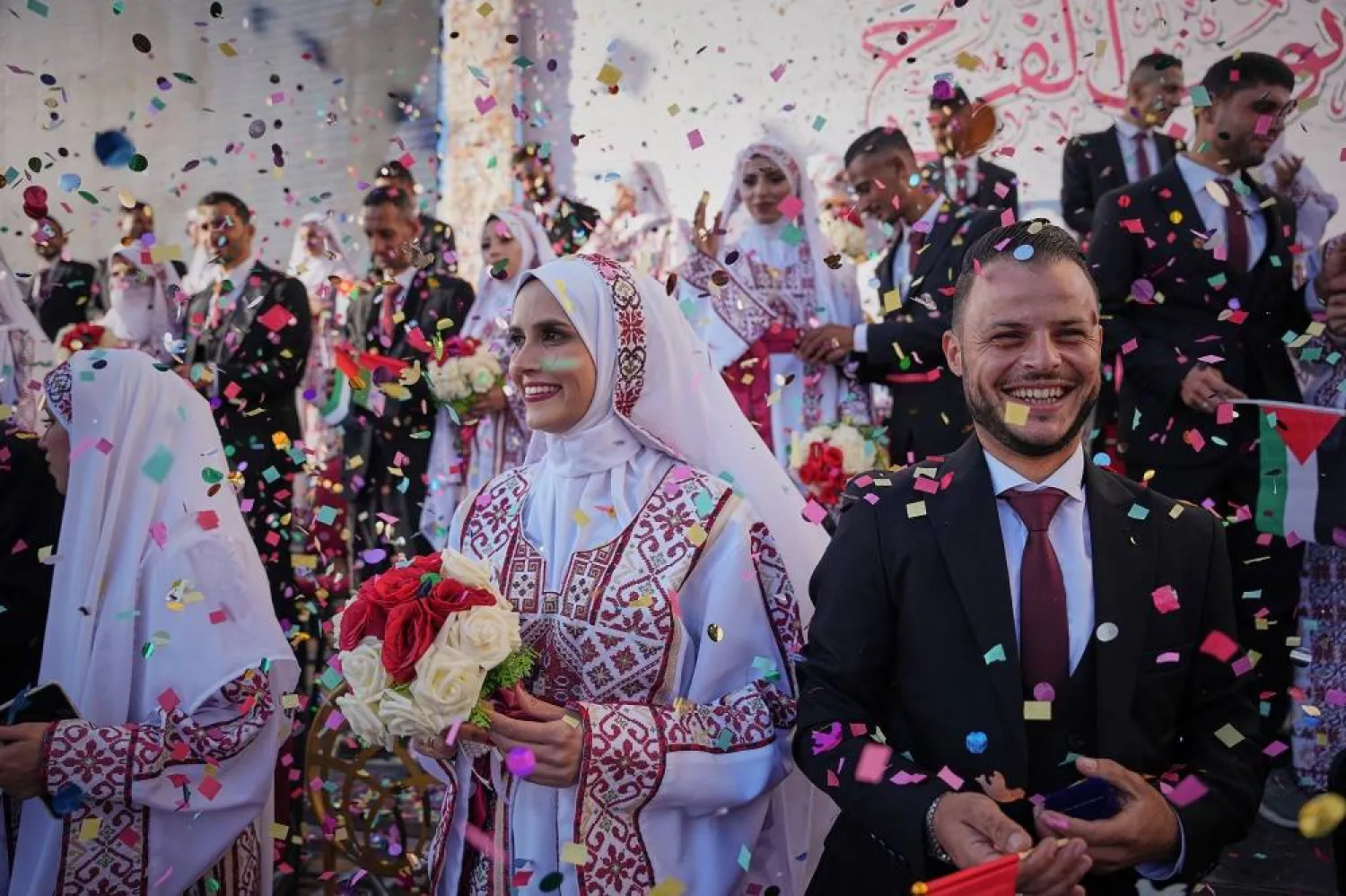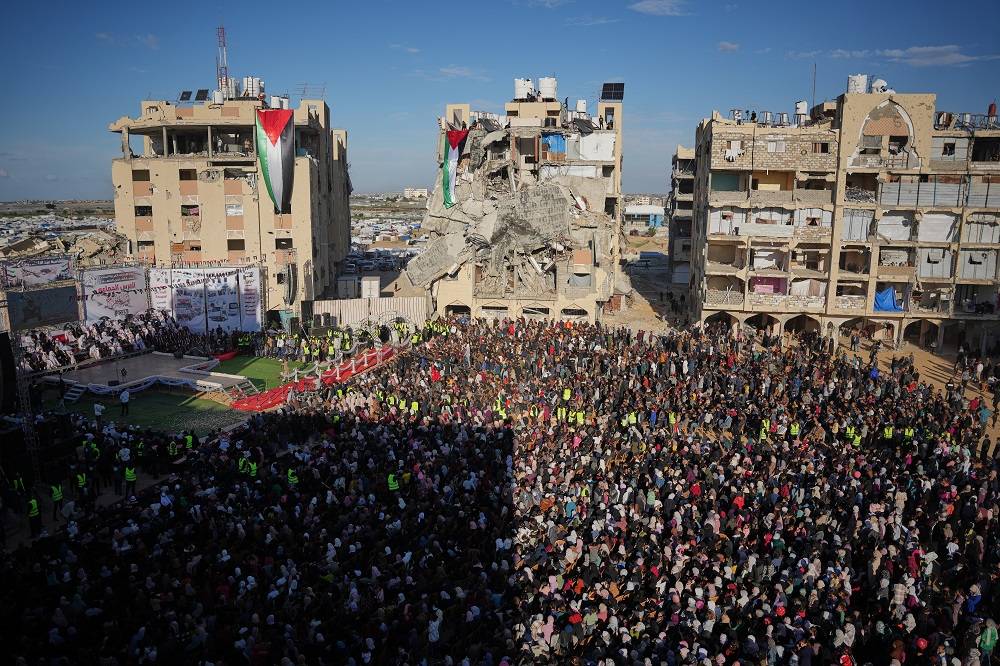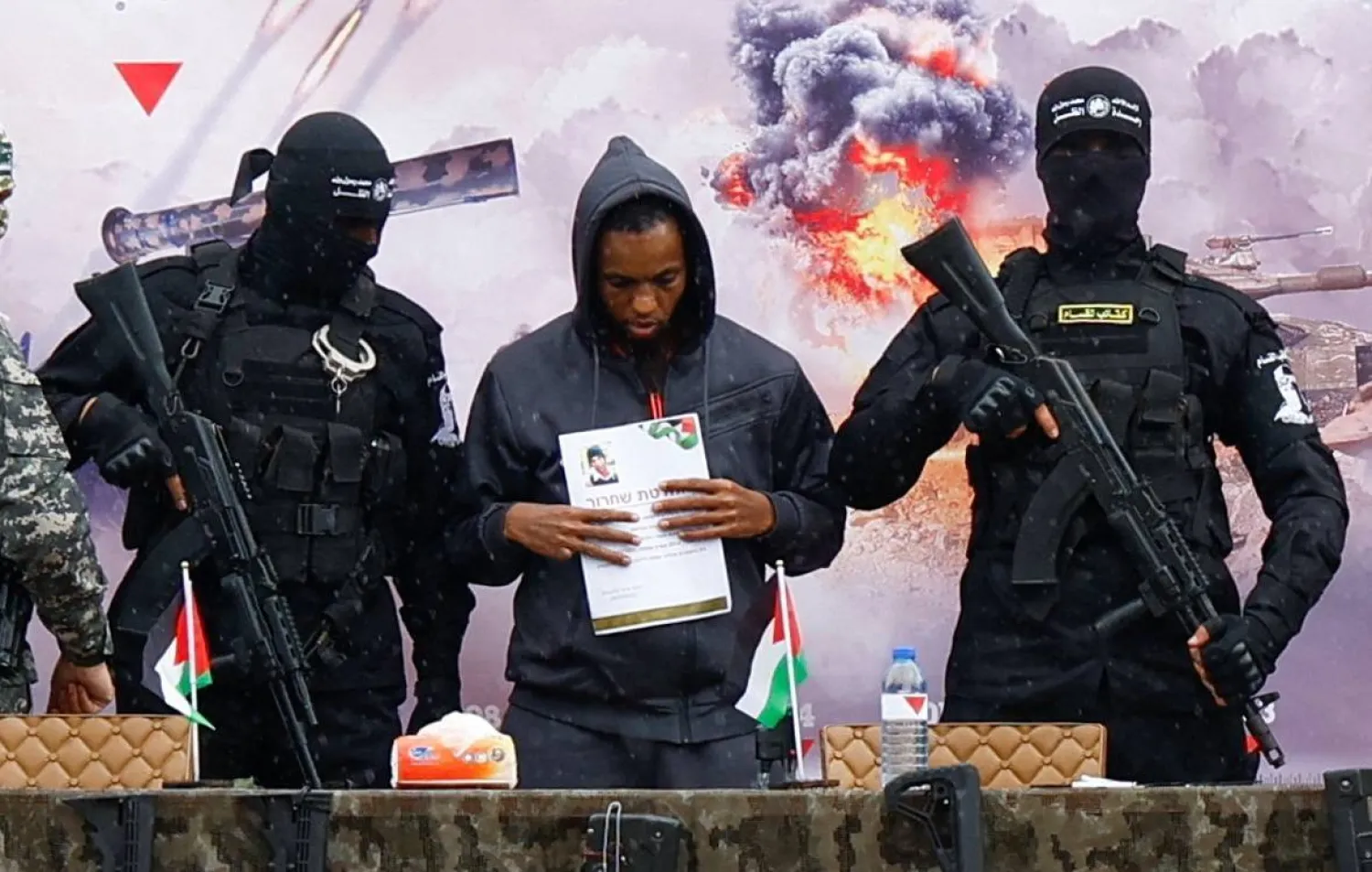Former loyalists to Bashar al-Assad who fled Syria after the dictator’s fall are funneling millions of dollars to tens of thousands of potential fighters, hoping to stir uprisings against the new government and reclaim some of their lost influence, a Reuters investigation has found.
Assad, who escaped to Russia last December, is largely resigned to exile in Moscow, say four people close to the family. But other senior figures from his inner circle, including his brother, have not come to terms with losing power.
Two of the men once closest to Assad, Maj. Gen. Kamal Hassan and billionaire Rami Makhlouf, are competing to form militias in coastal Syria and Lebanon made up of members of their minority Alawite sect, long associated with the Assad family, Reuters found.
All told, the two men and other factions jostling for power are financing more than 50,000 fighters in hope of winning their loyalty.
Assad’s brother, Maher, who is also in Moscow and still controls thousands of former soldiers, has yet to give money or orders, said the four people close to the Assads.
One prize for Hassan and Makhlouf is control of a network of 14 underground command rooms built around coastal Syria toward the end of Assad’s rule, as well as weapons caches. Two officers and a Syrian regional governor confirmed the existence of these concealed rooms, details of which appear in Photos seen by Reuters.
Hassan, who was Bashar’s military intelligence chief, has been tirelessly making calls and sending voice messages to commanders and advisors.
In them, he seethes about his lost influence and outlines grandiose visions of how he would rule coastal Syria, home to the majority of Syria’s Alawite population and Assad’s former powerbase.
Makhlouf, a cousin of the Assads, once used his business empire to fund the dictator during the civil war, only to run afoul of his more powerful relatives and wind up under years of house arrest. He now portrays himself in conversations and messages as a messianic figure who will return to power after ushering in an apocalyptic final battle.
Hassan and Makhlouf did not respond to requests for comment for this report. Bashar and Maher Assad couldn’t be reached. Reuters also sought comment from the Assad brothers through intermediaries, who didn’t reply.
From their exiles in Moscow, Hassan and Makhlouf envision a fractured Syria, and each wants control of the Alawite-majority areas. Both have spent millions of dollars in competing efforts to build forces, Reuters found. Their deputies are in other countries including Russia and Lebanon.
To counter the plotters, Syria’s new government is deploying another former Assad loyalist – a childhood friend of new President Ahmed al-Sharaa who became a paramilitary leader for Assad and then switched sides mid-war after the dictator turned against him. The task of that man, Khaled al-Ahmad, is to persuade Alawite ex-soldiers and civilians that their future lies with the new Syria.
“This is an extension of the Assad regime’s power struggle,” said Annsar Shahhoud, a researcher who studied the dictatorship for more than a decade. “This competition continues now, but instead of the goal being to please Assad, the focus is on finding his replacement and controlling the Alawite community.”
Details of the scheming are based on interviews with 48 people with direct knowledge of the competing plans. All spoke on condition of anonymity. Reuters also reviewed financial records, operational documents, and exchanges of voice and text messages.
The governor of the coastal region of Tartous, Ahmed al-Shami, said Syrian authorities are aware of the outlines of the plans and ready to combat them.
He confirmed the existence of the command-room network as well, but said it has been weakened.
“We are certain they cannot do anything effective, given their lack of strong tools on the ground and their weak capabilities,” al-Shami told Reuters in response to questions about the plotting.
The Lebanese Interior Ministry and the Russian Foreign Ministry did not respond to requests for comment. A UAE official said its government is committed to preventing the use of its territory for “all forms of illicit financial flows.”
An uprising could destabilize Syria’s new government as the United States and regional powers throw their support behind Sharaa, the former opposition commander who toppled Assad last December and is now navigating a fractured political landscape. It would risk igniting another round of deadly sectarian violence, which has roiled the new Syria over the past year.
For now, the prospects of a successful uprising seem low.
Chief plotters Hassan and Makhlouf are virulently at odds with one another. Their hopes are fading to win backing from Russia, once Assad’s most powerful political and military supporter. Many Alawites in Syria, who also suffered under Assad, mistrust the pair.
And the new government is working to stymie their plans.
In a brief statement in response to the Reuters findings, the government’s Alawite point man al-Ahmad said the “work of healing – of uprooting sectarian hatred and honoring the dead – remains the only path toward a Syria that can live with itself again.”
'PERHAPS THOUSANDS MORE WILL DIE'
Hassan claims control of 12,000 fighters, while Makhlouf claims control of at least 54,000, according to their factions’ internal documents. Commanders on the ground said fighters are paid a pittance and taking money from both sides.
The exiles don't appear to have mobilized any forces yet. Reuters could not confirm the fighter figures or determine specific action plans. Tartous governor Al-Shami said potential fighters numbered in the tens of thousands.
The new government took power after emerging victorious a year ago in the nearly 14-year civil war that plunged the country into sectarian bloodshed.
In March, nearly 1,500 civilians were killed across the Mediterranean coast by government-affiliated forces after a failed uprising in an Alawite town. Both Hassan and Makhlouf promise to protect Syria’s Alawites from the insecurity that has continued since March.
Alawite anger toward the new government erupted on November 25, when thousands took to the streets in Homs and coastal cities. They demanded more autonomy and the release of detainees.
The protests marked the first large-scale demonstrations Syria had witnessed since Assad’s fall.
Neither Makhlouf nor Hassan were behind the protests, but rather a cleric who opposes both men and publicly called on people to demonstrate peacefully. Makhlouf attacked the cleric the next day in a social media post, saying, “all these movements will only bring calamity, for the time is not yet right.”
One of Hassan’s top military coordinators told Reuters that fighting is the only way to restore Alawite dignity.
“We are lucky that only this number of our people have died so far,” said the coordinator, a former Assad-era military intelligence officer who is now in Lebanon. “Perhaps thousands more will die, but the sect must offer up sacrificial lambs” to defend the community.
According to January 2025 documents seen by Reuters, Assadist forces drew up initial plans to build a paramilitary force of 5,780 fighters and supply them from the subterranean command rooms. These are essentially large storerooms equipped with arms, solar power, internet, GPS units and walkie-talkies.
Nothing came of that early plan, and the command rooms – along a spine in coastal Syria about 180 kilometers from north to south – remain operational but essentially idle, according to two people with knowledge of them and photos seen by Reuters.
One photo showed a room with five stacked crates, three of which were open to reveal a collection of AK-47s, ammunition and hand grenades. The room also held three desktop computers, two tablets, a set of walkie-talkies, and a power bank. In the center was a wooden table topped with a large map.
For the plotters, “this network is Treasure Island, and they are all boats trying to reach it,” said one of the people, a commander who monitors the readiness of the rooms.
Al-Shami, the Tartous governor, said the network is real but poses little danger. “These centers have been significantly weakened since the liberation,” he said. “There is no concern about their continued existence.”
As senior military officials and ranking government figures escaped abroad in December 2024, many mid-level commanders remained in Syria. Most fled to the coastal regions dominated by Alawites, a Muslim minority that makes up a little over 10% of Syria’s population. Those officers started recruiting fighters, according to a retired commander involved in the effort.
“The most fertile ground was the military,” the retired commander said. “Thousands of young men from the sect had been conscripted into the army, which was dissolved in December, and they suddenly found themselves exposed.”
Then came the failed uprising on March 6. An Alawite unit operating independently ambushed security forces from the new Syrian government in rural Latakia, killing 12 men and capturing more than 150, according to a brigadier general who was involved with the ambush and has since left for Lebanon.
The new Syrian government says hundreds of its security forces died in the fighting that followed – a claim largely echoed by the pro-Assad fighters.
The brigadier general said 128 pro-Assad forces died in the uprising, which was quelled by the new government.
The Assadist exiles neither started nor commanded the uprising, according to the officers who were there, but those days marked a turning point. They began to organize.
AN ASSAD FAMILY FEUD
It was on March 9 that Makhlouf started calling himself “The Coast Boy,” declaring in a statement that he had been entrusted with a divine mission to help Alawites. “I’m back, and blessed be the return,” the statement read. It did not mention that he was in Moscow.
Makhlouf dominated Syria’s economy for more than two decades, with holdings estimated by the British government at well over a billion dollars in industries as varied as telecoms, construction and tourism. He used his money to fund Syrian army units and allied militias during the civil war, which broke out in 2011.
When Assad’s victory seemed assured in 2019, Makhlouf publicly claimed credit. Soon after, Assad seized Makhlouf's businesses, ostensibly because they were indebted to the state, and put him under years of house arrest.
Makhlouf escaped to Lebanon in an ambulance the night of December 8, 2024, as Damascus fell to Sharaa’s forces. Makhlouf’s brother Ehab also tried to flee that night in his Maserati, but was shot to death near the border and robbed of millions of dollars he was carrying in cash, according to four close associates of the family and a customs officer with direct knowledge of the events.
Reuters could not independently verify the events of that night.
Makhlouf now lives on a private floor in a luxurious Radisson hotel in Moscow under tight security, according to nine aides and relatives. He quotes frequently from the Quran. They said he became deeply religious during house arrest.
The Radisson in Moscow and group headquarters in Brussels did not respond to a request for comment.
Using trusted business administrators in Lebanon and Russia, Makhlouf is transferring money to Alawite officers for salaries and equipment, according to a financial manager and receipts and payroll tables seen by Reuters.
The documents show the money is funneled through two prominent Syrian officers who reunited with Makhlouf in Moscow: Suhail Hassan and Qahtan Khalil, who both held the rank of major general.
Hassan and Khalil claimed to have created a force for Makhlouf totaling what they said were 54,053 willing fighters, including 18,000 officers, organized into 80 battalions and groups in and around the cities of Homs, Hama, Tartous and Latakia. Many rank-and-file soldiers conscripted under Assad, however, gave up fighting when his government fell.
Hassan and Khalil didn’t reply to requests for comment about their role in transferring money.
One of his financial managers told Reuters that Makhlouf has spent at least $6 million on salaries. Payroll tables and salary receipts created by financial aides to Makhlouf in Lebanon claimed he spent $976,705 in May, and that one group of 5,000 fighters received $150,000 in August.
The total force numbers are real, according to five leaders of military groups in Syria who are on Makhlouf’s payroll and lead about a fifth of his following. But Makhlouf’s funding falls short of their needs, amounting to just $20 to $30 a month per fighter.
In addition, Makhlouf’s staff has sought to provide weapons. They have mapped the possible location of dozens of caches hidden during the Assad era totaling a few thousand firearms, according to schematics Reuters viewed. These stockpiles are separate from the hidden command rooms.
They have also been in discussions with smugglers in Syria for new weapons.
People familiar with the discussions said they didn’t know if new weapons were actually purchased or delivered.
Altogether, the five local military leaders said they command about 12,000 men in various stages of readiness. One of them told Reuters the time wasn’t yet right for action.
Another of the five commanders derided Makhlouf as trying to buy loyalty with “crumbs of money.”
All five said they had accepted money from both Makhlouf and Hassan, the spy chief. They saw no issue with overlapping paymasters.
“Thousands of Alawites, whether former Syrian soldiers or civilians dismissed from state jobs, live in extreme poverty,” one of the men said. “There is nothing wrong with taking some cash from these whales who sucked our blood for years.”
‘BE PATIENT’
Hassan ran the Assad dictatorship’s military detention system, which was notorious for extorting money at scale from prisoners’ families, according to a 2024 United Nations report about the system.
A Reuters investigation this year found it was Hassan who proposed moving a mass grave containing thousands of bodies in 2018 to the Dhumair desert outside Damascus to hide the scope of the Assad government atrocities.
Abandoned by Assad’s disintegrating army, Hassan fled first to the UAE’s embassy in Damascus and then took refuge in the Russian embassy in December 2024 for nearly two weeks. He was infuriated at what he perceived as ill-treatment by his hosts, who provided a single room with just one hard chair to sit on, according to two people close to him.
“Kamal Hassan is not one to sit on a wooden chair for days!” he said in one WhatsApp voice message to his inner circle from this spring, reviewed by Reuters.
Hassan ultimately took up residence in a three-story villa in suburban Moscow, according to an officer who met him over the summer. Since then, he has seen Maher al-Assad once and maintains close ties with Bashar’s Russian protectors, according to the two people aware of Hassan’s movements.
According to Hassan’s operations coordinator in Lebanon, Hassan has spent $1.5 million since March on 12,000 fighters in Syria and Lebanon.
“Be patient, my people, and don’t surrender your arms. I am the one who will restore your dignity,” he said in another WhatsApp voice message from April that appeared aimed at commanders. Two recipients confirmed the message was from him.
In mid-year, a charity called the “Development of Western Syria” announced its creation and said it was funded by “the Syrian citizen Maj. Gen. Kamal Hassan,” according to one of its initial Facebook posts. Three officers linked to Hassan and a manager in the organization described it as a humanitarian cover so Hassan could build influence among Alawites.
In August, the charity paid $80,000 to shelter 40 Syrian Alawite families, according to an announcement of its first action. That same month, Hassan sent $200,000 in cash to 80 officers in Lebanon, according to a payroll document seen by Reuters.
Over the summer, Hassan also recruited about 30 hackers once affiliated with his military intelligence branch, according to an aide in Moscow and one of the hackers, a computer engineer. Their orders were to carry out cyberattacks against the new government and plant spyware in its computer systems.
By September, Syrian government datasets that the engineer said his team stole were for sale on the dark web for $150 to $500. Reuters found several of the sets he identified online, including databases with staff details for the communications and health ministries.
The engineer said former spy chief Hassan plans a multifaceted attack to reclaim his place in Syria. “Major General Kamal knows that war is not only on the ground but on every front,” he said.
THE OTHER ASSAD
A potential key player in attempts to instigate an uprising is Maher al-Assad, the ex-dictator’s younger brother.
Maher controlled both a business empire and the most powerful unit of the Syrian military, the 4th Armored Division. Under him, according to research by the US think tank New Lines Institute, the division gained power and financial independence that made it akin to a state within a state – to the point where it received its own sanctions from the United States, Britain and the European Union.
A senior division commander, now in Lebanon, said Maher’s financial empire remains largely operational except for his alleged sales of Captagon, an illicitly produced amphetamine. His assets are believed to be stashed in shell companies both inside and outside Syria, according to a businessman close to him.
The commander said while Bashar al-Assad is focused on his private life and businesses, Maher still wants influence in Syria. The younger brother cannot fathom how the children of Hafez al-Assad, the dictatorship’s founder, could be forced out of Syria, he said.
Two division officers say many of its 25,000 fighters, both inside and outside Syria, still consider Maher al-Assad their commander and he can mobilize them if he gives the order.
Makhlouf isn’t seeking the Assads’ backing: Publicly, he has derided his cousins as “the fugitives.” Hassan, relying on years of personal ties and collaboration with the Assads, is appealing for Maher’s support, according to three senior sources in both camps.
Russia has so far withheld support for Hassan and Makhlouf, according to six people with direct knowledge of the exiles’ attempts to win over the Kremlin.
While Moscow is harboring the exiles, the Russian government has been clear that its priority is continued access to the military bases it still operates in coastal Syria, according to two diplomats familiar with Russia’s position.
In bidding for Russian help, one key figure is a senior Syrian officer, Ahmed al-Malla, who has had Russian citizenship since early in the civil war. Al-Malla brokered separate informal meetings in Moscow beginning in March between Russian officials and Hassan and Makhlouf’s two Russia-based deputies, according to handwritten minutes from one meeting seen by Reuters. According to the notes, the Russians told the exiles: organize yourselves, and let us see your plans.
Al-Malla did not respond to requests for comment about his role as a mediator.
But the meetings between Russian officials and the exiled Syrian factions have grown infrequent, said two people with direct knowledge of their scheduling. They said there have been none since President Sharaa visited Moscow in October to secure Kremlin support.
During the visit, Sharaa raised the issue of Hassan and Makhlouf with the Russian government, said al-Shami, the Tartous governor. Al-Shami said Russia – and, separately, Lebanon – “expressed their willingness to increase coordination and prevent any activity by these individuals within their territories.” He was unaware of any meetings the plotters may have had with Russian officials.
One of the diplomats said Sharaa’s meeting at the Kremlin “sent a signal to Alawite insurgents: There was no one abroad coming to save them.”
There are indications that Makhlouf, whose business accounts have been frozen due to international sanctions, is having cash flow problems. October salaries have yet to arrive, according to three people with knowledge of the transfers.
THE MAN ON THE GROUND
Since the March killings, the Damascus government has relied on a point man to counter the plotting: Khaled al-Ahmad, a childhood friend of President Sharaa.
An Alawite, al-Ahmad was once in Assad’s inner circle. He served as a shadow diplomat and a founder of the National Defense Forces, Assad’s largest allied paramilitary.
Like Makhlouf, al-Ahmad believed he was responsible for Assad’s victory in the civil war. Assad gave al-Ahmad much the same treatment as his cousin, stripping him of privileges and ordering him drafted, according to two aides.
Al-Ahmad fled to Cyprus, and then, in 2021, visited northwestern Syria’s Idlib to meet up with his old friend, Sharaa, according to accounts from three people who have worked with both men. They discussed Sharaa’s plan to topple Assad, according to the three people.
It materialized in December 2024.
Reuters reviewed WhatsApp voice messages from al-Ahmad in late 2024 in which he told key military officials that it was futile to stick with the losing dictator and promised clemency if they abandoned him and prevented a bloodbath.
In his statement to Reuters, al-Ahmad said his objective as the government fell in December was to prevent more bloodshed, but acknowledged being unable to fully “spare Syrians from further loss, or from the sectarian shadows that continue to darken our society.”
Today al-Ahmad is Syria’s most powerful Alawite, moving between a Beirut penthouse overlooking the sea and a fortified villa in Damascus.
“His role is considered crucial in fostering trust between the Alawite community and the new government,” said al-Shami, the Tartous governor.
Four aides said al-Ahmad is funding and coordinating job creation and economic development because he believes they are the solution to the destabilizing high unemployment that followed the fall of Assad, when the army was dissolved and Alawites lost government posts.
In late October, the Interior Ministry announced the arrest of a coastal cell it said was funded by Makhlouf that was plotting to assassinate journalists and activists.
In all, Tartous governor al-Shami said, the number of arrests of people linked to Makhlouf and Hassan was in the dozens.
Along that same coast, stockpiles of gear are quietly gathering dust in underground rooms, according to the field commander, who personally keeps watch over several of them.
They’ll be ready when needed, he said, but so far he sees no side worth choosing.










